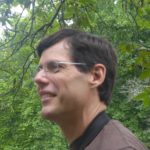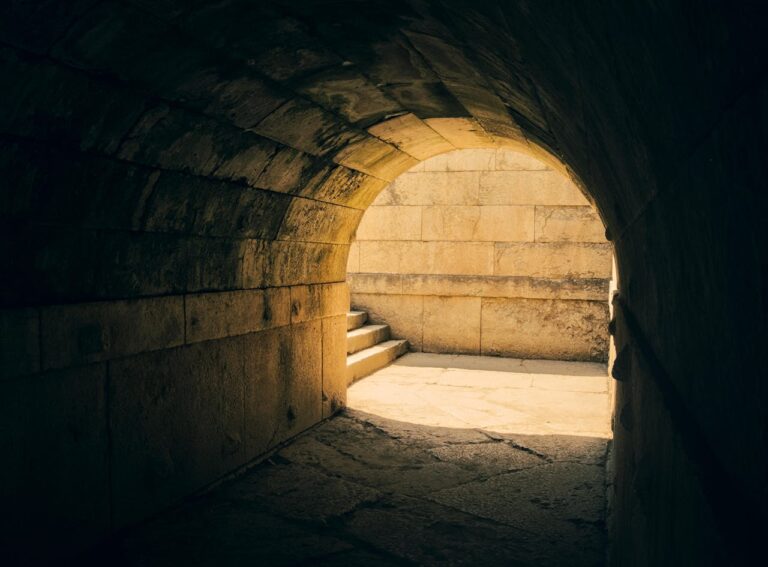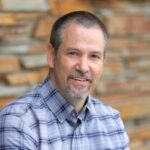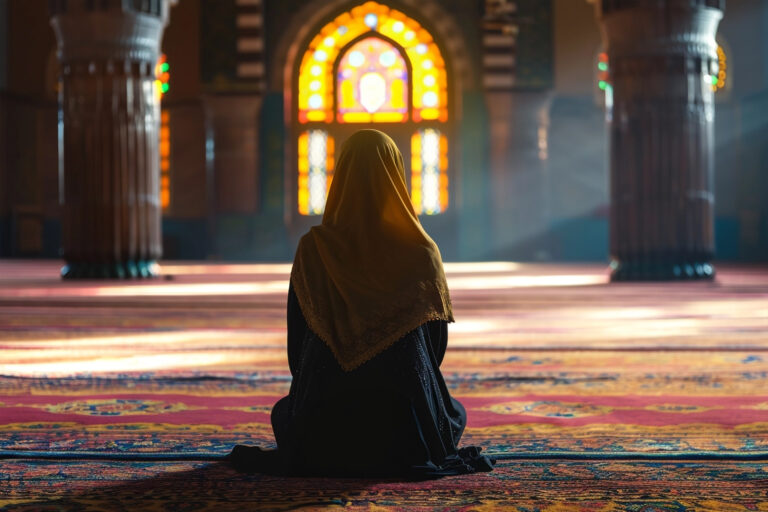From the first words Jesus bar Joseph spoke, he forecast the genius the villagers had heard only prodigies possessed. As he matured, an unbroken spiritual intuition distinguished his speech. Each year he watched other boys leave for the Passover and return seasoned by the experience. Since his twelfth birthday he thought of little else, instinctively knowing that what happened there to others, would offer him defining instruction.
When he stood with Joseph on a ridge of Mount Olivet looking across the valley at Jerusalem, Jesus already felt himself a participant in the festivities. As he looked, a quivering awareness and ripening expectation surged within him that he couldn’t immediately harvest, but which at once animated and stimulated, persuaded and bolstered him. An already-irresistible force had seized him; an awareness that frightened as it delighted both parents standing alongside. Every feature aglow, his high, thin voice shouted, “Look, father, the temple; why, it’s like Mt. Hermon in winter.”
After some time, the trio continued their journey, joining a host of worshipers in their friendly assault on the fabled city. On they came, by the multiple thousands until two to three million pilgrims arrived, religious to their core, devoted to Moses, and some of them red-eyed patriots with added agendas. On they continued along the ridge, then exited the mountain to their pre-arranged rendezvous in an olive grove.
“When he stood with Joseph on a ridge of Mount Olivet looking across the valley at Jerusalem, Jesus already felt himself a participant in the festivities.”
As sunrise rimmed the mountain behind them, Joseph and Jesus walked the next morning to an overview and looked across the valley as Joseph pointed out the city’s landmarks: the revered three-tiered temple; its despised Tower of Antonia, mocking the Glory by its pretense; the buildings housing the government’s bureaucracy; the houses, apartments and palaces of the wealthy on the terraced western hills; the ostentatious swagger of Herod’s Palace, flaunting its stateliness toward the Majesty opposite. And, everywhere, monstrous limestone blocks shored up valleys and created broad terraces for the structures built on them.
After breakfast the family joined other pilgrims marching down the Kidron to its junction with the Hinnom Valley. Here the steep Tyropean Valley led northwest, intersecting the city above them. Here all the pilgrims, bursting with pride in their national acclaim of God Almighty, ascended slowly, singing to the accompaniment of flutists, “I rejoiced with those who said to me, ‘Let us go to the house of the Lord.’”
From the valley floor only massive walls could be seen, laid course on course from bedrock, enclosing the great city in their stony embrace. Up the canyon the worshipers edged, now a broad, now a narrow column, accompanists leading, everyone chanting Psalms, climbing higher from the depths step by step past four-foot-high stones darkened by years of use, mold growing in secluded crevices. Far above and beyond the cool and damp canyon floor, they saw the viaduct that leaped the canyon between the temple grounds and the city’s western suburbs.
“I rejoiced with those who said to me, ‘Let us go to the house of the Lord.’”
At the southwest corner of the temple mount, where a grand staircase carried the Valley northwest past the Western Wall, the pilgrims turned up the broad, covered staircase leading to the Huldah Gate of the temple and to the ritual baths carved from limestone at its base. Here, segregated by sex, each bathed before ascending steps to the Court of the Gentiles. Then, in family units, up they all walked—the parents accustomed, the boys thrilled, Jesus feeling thunder in each heart beat!
The stairs led Joseph and Mary to worship. As Jesus threw his mind out like a net, gathering everything within sight, they led him to mystery, interrogation, and discovery. Up they walked, hand in hand, the boy called spiritually-aloft in his ascent of a temple Herod had rebuilt from the foundation upward, according to Solomonic design into a luxury that attracted visitors Empire-wide. Into the Court of the Gentiles they passed, the entire complex running hundreds of yards in every direction, cobblestoned and surrounded by massive porches.
Jesus gasped at the Court’s size, though he had often heard Joseph speak of its colossal dimensions. Scores of thousands occupied the area in a Babel of languages, clothing and colors, nearly everyone using it as a thoroughfare to the Jewish courts beyond. Here Joseph chose the lamb his family would share with another, paid the vendor and, in a single, swift motion seized the startled animal’s four legs, squeezed each pair together and swung it over his head, the legs held securely in front by his left hand.
“Here Joseph chose the lamb his family would share with another.”
As they approached the Court of the Women, Jesus saw the balustrade Joseph told him to expect, and on it a warning to Gentiles not to trespass on the threat of death. Climbing the few steps into the Court of the Women and looking through it, Jesus glimpsed the Magnificence beyond, its protective wall pierced by many gates. Throughout the Court prophets and teachers exhorted their audiences while rabbis taught and discussed among themselves. Soon passing the trumpet-shaped chests of the Treasury, Mary dropped coins that rattled into the receptacle below.
The family walked together to the fifteen steps leading through the Nicanor Gate into the Court of Israel. As Mary watched, Joseph shifted the lamb to Jesus, lifting the animal above his head and deposited it sideways into the boy’s extended limbs. Shuffling them, Jesus snugly cradled the lamb, its frightened black eyes and soft bleating soon quieted in his embrace.
Mary remained behind as Joseph and Jesus walked slowly up the stairs into the vast concourse jammed with male worshipers and their sons. Funneled by ropes, strung between portable posts, into one of many long lines leading to thousands of priests on duty, the pair inched forward. As the line crawled, Jesus kept his gaze focused beyond and above. He saw the horns, then the great, high altar of sacrifice, a 75-foot square of undressed stone rising 22 feet, its ramp climbing from the south. He inhaled the odorous mixture of blood, meat, and fire; above all, he listened intently as, from the Court of the Priests, and carrying throughout the Court of Israel, soaring Levitical voices and instruments praised and petitioned God Almighty.
“He saw the horns, then the great, high altar of sacrifice.”
THEN, definitively…thirty-three feet beyond the altar, on a terrace reached by 12 steps, the SANCTUARY! Transfixed, he scrutinized the monstrous white limestone blocks, 37-feet-long, 12-feet-high, and 20-feet-wide, 40-foot-tall temple doors, the vines and grape clusters tall as a man, opening into the Temple Porch. Inside, where he could never go, he envisaged the Holy Place, windows at the high ceilings, its table, lampstand, and altar of incense; and beyond that, and the spectacular double-curtained tapestry, a cube of perfection, never lighted and always dark, never seen, and only annually entered, the Name of God residing in and filling the emptiness.
He had heard it all many times, but now saw it, rising level by level, flight by flight, terrace by terrace, height by height above all: God’s House. His eyes feasted on the snowy mass before him, gilded with gold panels, embellished with precious stones, tier upon snowy tier of massive stone, a 150-fifty-foot-high, 15-story monument to the Eternal!
They waited long for their turn, though it seemed an instant to the lad, so intent on discovery he had become. It all seemed so new, yet inexplicably familiar to him; so ambiguous, yet inexplicably plain; so daunting, yet inexplicably comfortable.
“It all seemed so new, yet inexplicably familiar to him.”
Without realizing it would happen so quickly, they stood at last before the priest. Joseph turned to retrieve the now-sleeping lamb from Jesus. Suddenly awakened and terrorized, the lamb bleated loudly. Joseph set it down, with a swift slash opened its jugular and, as Jesus watched intently, drained the blood into a bowl the priest held. The priest removed organs, small portions of fat and offal from the lamb, took the blood and passed it from priest to priest until dashed against the base of the altar. Then Joseph was free to take his son back to Mary.
But Jesus wasn’t free to go.
As he knew it would, something explicit occurred in his spiritual experience as he watched, studied and pondered the scene. He had heard it all, and now saw it all: the great spaces of the Courts; the magnificent gates through the walls; the semi-circular steps leading upward level by level to the altar in use; the Sanctuary beyond and, above all, the lamb slain.
Something in that sacrifice aroused him. Of all the sights and sounds blitzing his mind, seeing the altar, the temple and the lamb sacrificed, moved him as nothing else had. An unfathomed depth in him surged upward to meet God’s plunging interrogation, and the conjunction of structure and ceremony issued him a stunning clarity of understanding and purpose.
Instantaneously and intuitively, as if the hidden prompting vocalized itself, awareness flashed across his mind: he was the lamb moments before living, now dead! It was he, now alive in youth but, in a Passover to come, returning from the sacrifice a corpse. From the altar’s flame and smoke, pouring out spiraling columns of incense, to the lifeless lamb in Joseph’s arms, Jesus looked; its eyes closed, its blood gone, its bleat stopped.
“Jesus looked; its eyes closed, its blood gone, its bleat stopped.”
This was his future, then…life to death. Hope to death. Youth to death. His fate. Death and Death and Death. Twelve-year-old emotions staggered under the colossal darkness eclipsing him. He choked at the swelling lump in his throat. Sweat beaded his brow as he shook away the burning in his suddenly-smarting eyes. Oppression began strangling his confidence, disheartening his optimism, destroying his courage. It was too much for anyone, let alone one SO YOUNG!
Then…when it seemed his heart would burst from the trauma, Rescue, Relief, Enlightenment came. Jesus suddenly cocked his head slightly…as if Someone were speaking…and counseled him to look beyond the end to the new beginning without end…to listen again to the swelling Levitical instruments and voices…to look again at the magnificent structure designed in Heaven and given to Moses.
Like a scholar before his tutor, he obeyed…and maturity bloomed! In waves the new awareness came, taking shape like clay under a seal. Yes, his would be a crushing tempest of sacrifice, blood and death, but followed by reconstructed renewal of humanity. Yes, an obliterating demolition would bury him, but out of the rubble he would rise, arms, hands, legs and body, alive in resurrection power, the rubble a powdery disintegration at his feet.
On and on that instruction flowed, his young mind an empty vessel preserving every word. On and on it came, assuring him a death that achieved the result God desired, followed by ineffable glories, his life swallowing the death that dared ingest him. That was the whole story, the Voice continued, endurance followed by ecstasy, death by resurrection, sorrow by joy.
“That was the whole story, the Voice continued, endurance followed by ecstasy, death by resurrection, sorrow by joy.”
It could have been an hour, a day, a decade, a lifetime he stood there, he learned so completely and clearly in those few minutes of epiphany, unraveling mysteries hidden in him from birth, blossoming the buds forming in his mind those dozen years.
A soft sunrise beauty now wreathed his countenance. Love poured across his face, his eyes glittering, dancing beatifically, his entire being a magnificent serenity, his lips slightly open, his eyes blinking slowly to catch every fleeting instant.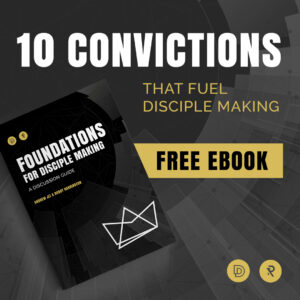
As one glorious scene after another crossed his olive skin, peace on peace, love on love, joy on joy, he stood beside Joseph lost in reverie, listening to Another Voice calling him back to his origins.
And Joseph heard his boy say something, but NOT to him. Lost in a mixture of wonder, admiration, contemplation and surrender, a whisper preserving its sanctity, “Yes, Father, I understand….Your will be done in this temple through mine!”
Suddenly, at the Feast of the Unleavened Bread, without having to study further, he clearly perceived. As if God himself pulled aside all the shades and poured his own gleaming brilliance into this boy, Jesus understood.
His life had been a savings account into which he deposited all his knowledge and experience. Now as he drew the interest from that hoard, he KNEW. All his adolescent erudition matured in one brilliant shining. From concealed chambers deep within illumination flashed.
“As if God himself pulled aside all the shades and poured his own gleaming brilliance into this boy, Jesus understood.”
Now, as he stood there, something from outside of time, beyond time, and before time came to him. Something previously hidden in fragments of ideas and concepts and convictions that had fluttered in his mind, hidden in the alteration from Spirit-Deity to God-man, suddenly and tumultuously poured enlightenment into him. As he stood before God’s great temple, and saw the slain lamb, he knew, absolutely and clearly, that as surely as it opened eastward to the future…to new life…to a new day…to possibility…to hope…to rebirth…to tomorrow…it most clearly and emphatically opened TO HIM. In HIM the temple found its sacred purpose, as the person in whom God would be close to, not distant from—and seen by, not hidden from—his people.
Now he knew why, on the ridges north of the city, and on the overview east of the city, and in his fixation on the sanctuary since he first entered its precincts, he had studied, searched and pondered it. Wherever else Joseph pointed, and Jesus looked to see, he had returned to the temple mount, as if something there had meaning that nothing else he saw possessed; as if understanding that meaning would uncover his purpose in coming to the city, to the Passover, to the world. In every quizzical look and furrowing brow since first seeing the temple, he experienced a uniting of past and present, the past unlocking, the present standing open before it, as if the spiritual fire within him needed only temple oxygen to set it ablaze.
Standing in the Court of Israel, with his father finished and ready to go, but paralyzed by a look in his son’s face he had never before seen, Jesus had his personal epiphany.
“In HIM the temple found its sacred purpose.”
He instinctively knew that Jesus had been talking only to God. He had often seen his child contemplative, his mind seeking keys to undeciphered, unsolved mysteries, but never with every feature so concentratedly focused. As Joseph stood awestruck, unable to move without his son’s permission, Jesus remained in place, savoring the experience, delighting that, after twelve long years he clearly understood that God built the temple as his shadow. That in him, God’s Son, God had perfected what the temple forecast. That the whole massive structure fit inside his mind; that the Majesty hidden in the Holy of Holies would burst from within him. That he was all that it symbolized.
He stood awestruck, his face seraphic from the inner grace experienced—the look Joseph saw, and before which he staggered—and Joseph heard his boy repeating to himself quiet, emphatic affirmations of ownership: “My Father’s House!,” and “I AM all that this represents!”
He couldn’t yet fill in all the details; he couldn’t yet explain it all. But he KNEW, as Joseph stood reverently by, overwhelmed, eyes swimming, head reeling, that his was a Godhood become man.
Joseph also knew…he had lost a son as God gained his Servant.
Adapted from Virgil Hurley, Face to Face with Jesus.







